It’s difficult to start to understand a city as Cairo in a short visit of only a couple of days. However, if you let yourself walk around the streets, get a taxi or sit down to drink a tea at any small street shop you could get a glimpse of the soul of this chaotic, overwhelming and marvelous city. This is not a story of Cairo, we don’t try to make a minimally comprehensive description of the city. It’s only a short trip around the experiences, feelings and fears that Karla and myself have done on our two-day visit to Cairo.
Day 0
Arriving at an unknown airport in an unknown city at night is always a stressing experience. However in this case the new installations have probably a balsamic effect in our minds, especially if you went from Khartoum in Sudan (and more if you had there the opportunity to watch the “only men” passengers flying to Teheran). In any case when you arrives, you have to navigate a hoard of taxi drivers (and managers). There are no rules, except that 100 Egyptian pounds is a maximum for a ride to downtown. We were happy to meet Mustafa: good price, good cars and good service.
We were hosted at Pension Roma close to Tharir Square. A colonial-style old hotel that is just fine for sleep, have breakfast and rest … except if you are a luxurious person desiring hot water any morning for the shower. The first night we had dinner at Gad, which we discovered later that is a kind of oriental fast-food channel. Probably, in part because we had no previous experience the food and juices seemed to us very good, more close to a good restaurant than to an “burger take-away”.
Day 1
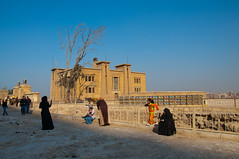

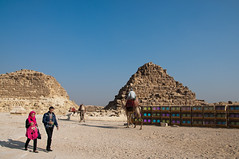
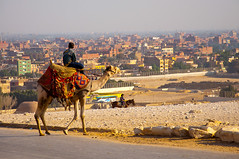
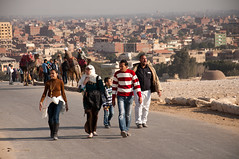
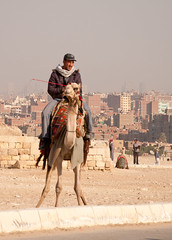
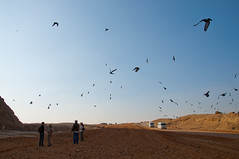
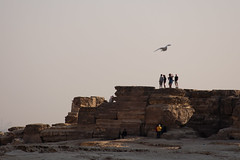

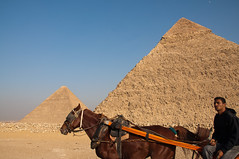
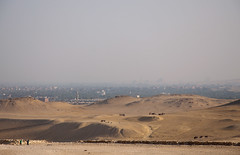
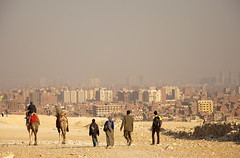
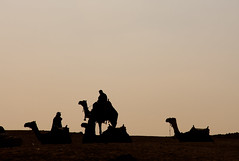
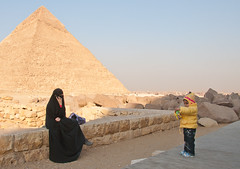
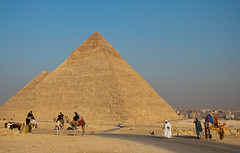


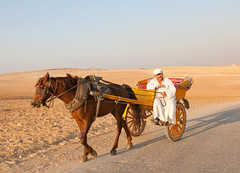

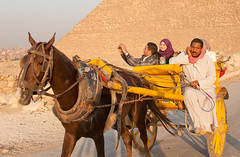
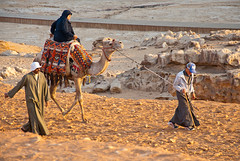
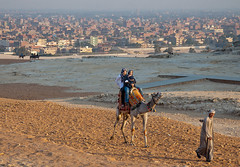
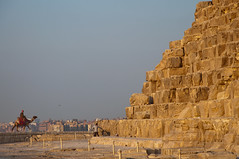

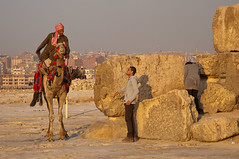
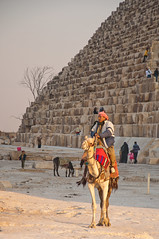
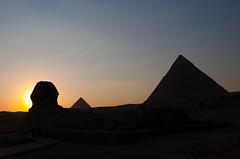
The first morning we walked to the Tharir Square to have a general view of this emblematic place. The square is enormous and one half is occupied by works for the new Egyptian Museum and a development of a luxurious hotel. The other half is the place where the main symbol of “Egyptian revolution” remains as a large camp. A couple of young men, probably police, controlled the entry to the camp and asked for identification. Apparently nobody had problems to enter the place. We walked all around there camp plenty of calm people that were talking or trying to sell different products (from stickers to small notepads). Most of the people were young wearing modern clothes and almost no veils were present (but also, only a few women were there).
After that, we started our visit to the Pyramids. Surprisingly for us they were very close to the metropolitan area of the city, actually the suburbs seem to be trying to swallow the desert expanse where the three large pyramids and the sphinx are located. Our taxi driver Ibrahim accompanied us in the complete trip. That is a good idea because the difference in price is small and he take care of the multitude of people approaching the cars arriving to the entry of the Pyramids area trying to sell any imaginable (and unneeded) service.
Almost no tourist bus was there and only a few local people, enjoying their Saturday, were visiting this historic “thematic park”. After the entry in the closed area, some people, including police, continue to offer “services” or ask for money, but they are in general quiet and gentle. Weather was cold for the standards of the place, probably less than 20ºC, and the long walking around the pyramids was an incredible experience. Many people prefer to make the trip by car or renting a horse or a camel, but walk is the best way to feel the desert and the scale of these symbols of the old Egyptian civilization. Close the Pyramid of Giza, a modern building encloses a reconstruction of the Nile boat that was found dismantled close tot the dumb of Kheops. The visit to the boat allows to watch the landscape from an elevated view; the atmosphere inside this glass building is especial and the best is to remain quiet and in silence watching the desert. Of course, you can devote some minutes to watch the cedar-made boat and to imagine the number of “remeros” needed to move the artifact along the Nile (although probably the only destiny of this boat was to be used by the soul of the Pharaoh after his death).
We decided to expend almost all our time outside, walking and admiring the landscape. It is possible to enter one of the pyramids, a bad idea for your knees but good if you have are a kind of archeological freak. We arrived to the Sphinx, located in the lower part of the park, too late to visit it or to watch its details but in the exact moment when sun was disappearing in the back of this strange sculpture.
After a day at the Pyramids we decided to visit the main street market of Cairo at night. Khad Al Khalili is a huge quarter crossed for some avenues with highways in various levels. It is difficult to describe this place: crowds of people moving in all possible directions, women wearing burka, young men with jeans and aviation jackets, old-style Arabs with “chilabas”… and four westerners trying to navigate this sea of people. Most of the streets and very narrow, but incredibly they allow to install shops in the outside in both sides, to have many motorbikes and occasionally some small trucks moving around, and people carrying large boxes with products. The market is organized thematically, and you can move from the clothes area to the food, crafts, artificial flowers and plants or electronics, to put only a few examples, in a succession of gradual changes and explosions of colors. For us one of the most striking experiences was to watch women wearing the strict veiled clothes admiring and wearing sexy underwear and clothes. Probably this was the most popular and large part of the marked. Inside this organized chaos is easy to feel lost, but you have to get out to one of the main streets, crossed by elevated highways, to get your path. The problem is when, trying to get out, you enter more and more inside the quarter, where shops start to disappear and lights decline.
After this visit we decided a radical change going to have dinner at the modern quarter of Zamalek. We went to La Bodega, a nice restaurant in a first floor of one of the main streets of the city, but we got a little disappointed discovering that the two-rooms restaurants is specialized in French and Italian cuisine. Nothing wrong with that, food was delicious and service great, but probably we were too ingenuous thinking that we were going to discover new Egyptian specialties. After the dinner, we discovered some bars and pubs where you could drink a short list of cocktails. Definitively it seemed that an Arab country (although some Egyptians surely would discuss the Arab nature of their country) is not the best place to explore sophisticated alcoholic drinks.
Day 2
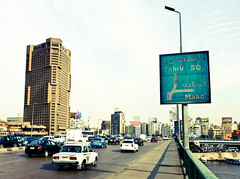
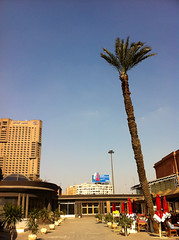
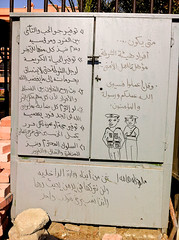
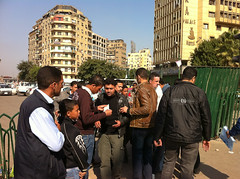
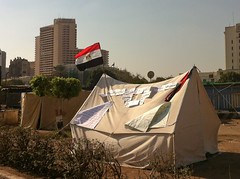
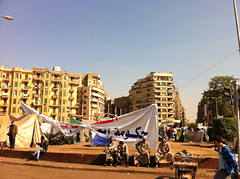



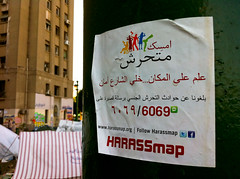
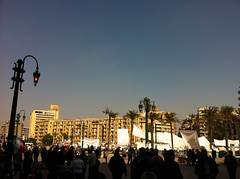
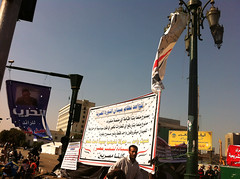
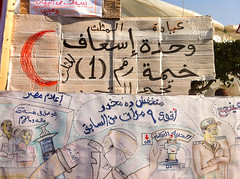
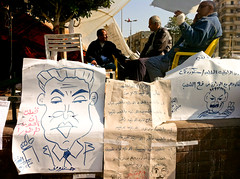
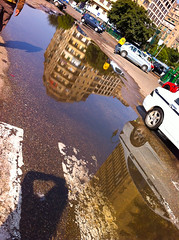

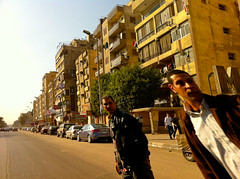
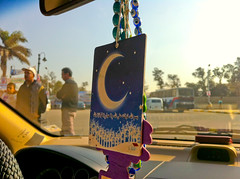


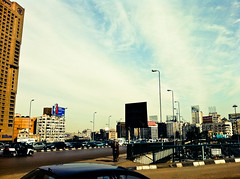
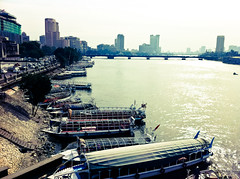
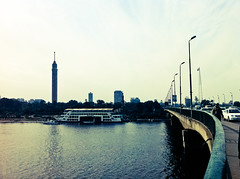

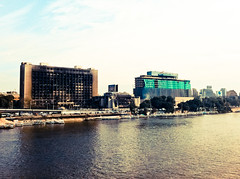


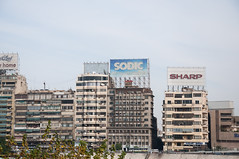
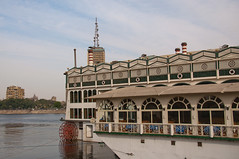
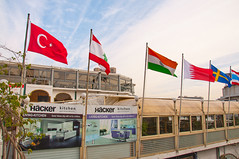

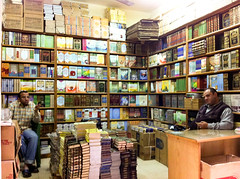
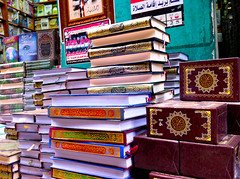
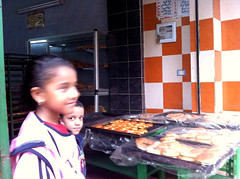
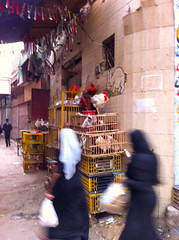
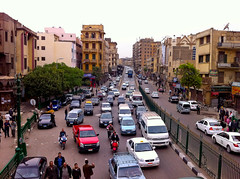
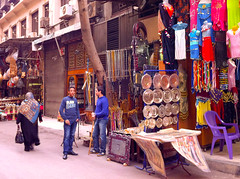
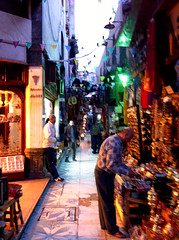

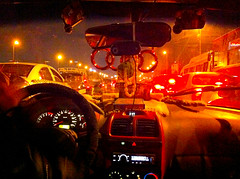
On our second and last day in Cairo we had a couple of simple objectives: a visit to the Egyptian Museum and a walk, a probably a lunch, at the Nile. Karla and I paid a rapid visit to the Museum, an old building full of sculptures, mummies, all kind of objects and information about the history of Egypt. The collection is going to be translated to a new building in the near future and probably this will improve the educational experience. However the feeling of visiting an 19th century museum full of pieces, many of them only identified by a number or without any tag at all is just great. If you want to understand and learn about Egyptian history and art you should expend days inside this building. However in any case, my personal advice is to devote a couple of hours to walk along the different rooms just watching the “landscape” and people, the chaotic appearance of the ordering of pieces, the dimensions of the sculptures and the rooms, the people moving around the main pieces… Probably nobody could agree but for me this and Dublin Museum on Natural History provoked a similar experience.
After the Museum, we went walking to the Nile crossing one of the bridges that allow us to discover another urban landscape, one of large (and ugly) buildings showing the complete plenitude of a megalopolis. The margin of the Nile is colonized by large and old boats converted in restaurants and music bars. Some of them were too impersonal, almost void of people. But we were lucky discovering one with just a few clients and a good menu of Oriental foods.
We used the last daylight hours too return to Khad al Khalili to buy some gifts. In this occasion we explored other part of the quarter, the more touristic one. Everything seemed more ordered and clean. In this part we discovered some very nice coffee and teashops. Actually, we got a deep feeling of having a coup of tea at a cafe on the square whereas the lecture of the Coran from a nearby mosque accompanied us.
After knowing the “essential Cairo” for a two-day casual visit, we were free to probably start the real visit. In this occasion we were lucky because a friend of Karla from Santa Maria (Paula Jobim) had studied film-making some years ago in Italy with an Egyptian guy, Tamer, that now lives at Cairo. He invited us to his home in Zamalek, very close to the restaurant of the previous night. We expend almost two-hours in an incredible kitsch taxi crossing the city to arrive to a quiet house where Tamer offered us a great conversation about Egyptian life, history and politics. Besides film-maker, Tamer is an specialist in literature and offered us an incredible mind travel around Cairo and its alleys through some of the books of Naguib Mahfouz. Actually we went to a couple of bookshops to get English versions of the books that he recommended us as the starting points to immerse in the Mahfouz literature and, in this way, in Cairo’s life and street culture. But Tamer provided us a couple of presents more: a taste of the best ice creams in town (especially the exotic, for us, dates flavor) and the recommendation of a real Egyptian restaurant close to his home, the Abou el-Sid. We enjoyed the typical Molokheya and a comfortable place full of people dinning.
The days were gone and our last experience was the following early morning a rapid taxi ride to the airport. The city was waking up and traffic was calm for the Cairo standard, which is crowded in our perception. We thought that this city deservers a longer visit. And if you enjoy crowded and crazy places, megalopolis of 20 million people, diversity and street life, as myself, this is a place to be happy during at least some months. But this is could be in a hypothetical future story…
[Text: Juan Freire/ Photos: Karla Brunet]


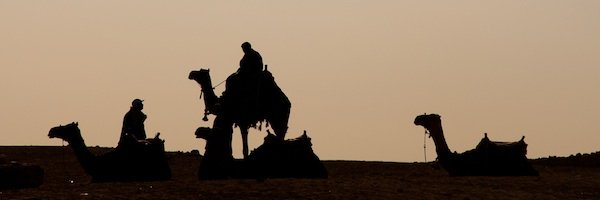



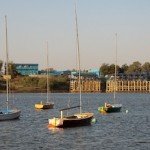
Social Profiles